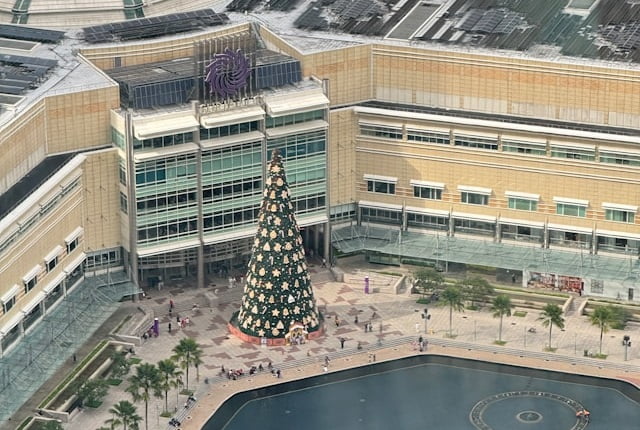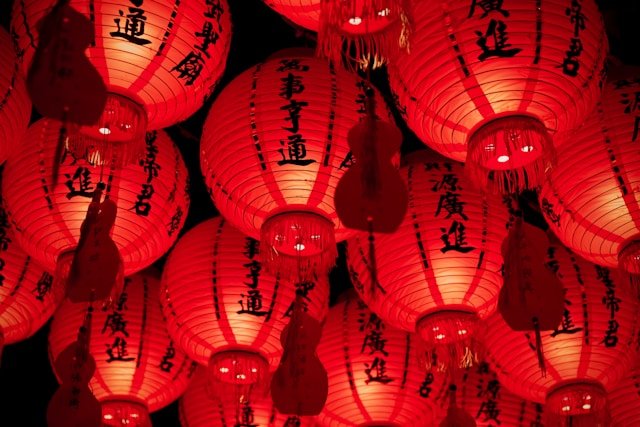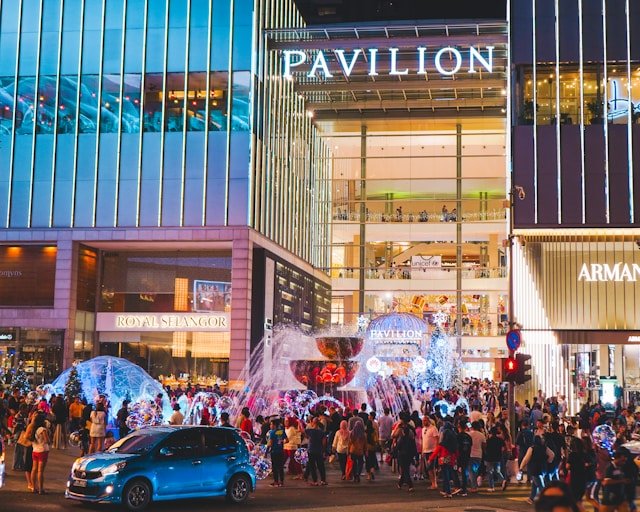Top 8 Roles of Shopping Malls in Malaysia
In Malaysia, shopping malls stand tall as more than just commercial spaces. They are thriving hubs of activity, community, and culture. From Kuala Lumpur’s bustling streets to the serene corners of Penang, shopping malls play a crucial role in shaping the Malaysian lifestyle. This article delves into the prominence of shopping malls in the hearts of Malaysians. We will discuss the top 8 roles of shopping malls in Malaysia.
1. Retail Therapy and Recreation
Shopping malls in Malaysia serve as vibrant hubs of retail therapy and recreation. They offer an array of experiences beyond mere shopping. For example, the iconic Suria KLCC in Kuala Lumpur boasts not only a wide range of high-end boutiques but also an expansive park, a concert hall, and an aquarium. The mall can attract a huge amount of locals and tourists every year. Similarly, the Sunway Pyramid in Selangor features an indoor ice skating rink, a multiplex cinema, and a water park. Within a mall, there is something for everyone, from thrill-seekers to movie buffs.
These malls become gathering spots for families and friends, fostering a sense of community. The Publika in Kuala Lumpur exemplifies this by hosting regular events like flea markets, live performances, and food festivals. It fosters a lively atmosphere where people can connect. Additionally, malls such as 1 Utama Shopping Centre and Midvalley Megamall offer extensive dining options, from international cuisine to local delicacies. Thus, in addition to being centers of commerce, shopping malls in Malaysia serve as multifaceted destinations where leisure, entertainment, and socialization intersect.

2. Shelter from the Elements
Characterized by high humidity and frequent rainfall, Malaysia’s tropical climate makes outdoor activities challenging at times. Shopping malls offer cool and air-conditioned environments where people can escape the heat or seek shelter during sudden downpours. This climatic consideration significantly contributes to the popularity of malls, as they offer comfort and convenience regardless of the weather conditions.
3. Cultural Melting Pots
During festive seasons like Hari Raya and Chinese New Year, shopping malls across Malaysia undergo stunning transformations. For example, during Hari Raya Aidilfitri, malls like Midvalley Megamall and Gurney Plaza come alive with colourful decorations and cultural performances. They provide a platform for Malaysians of all faiths to immerse themselves in the joyous spirit of the occasion. Similarly, during Chinese New Year, malls are adorned with vibrant red lanterns and paper-cut decorations. Many malls host lion dance performances and showcase traditional Chinese arts and crafts, attracting visitors from all backgrounds to partake in the celebrations.
Moreover, shopping malls frequently organize cultural events and exhibitions that celebrate Malaysia’s diverse heritage. These cultural showcases feature various performances and workshops. They introduce the traditions and customs of Malaysia’s various ethnic groups, fostering cross-cultural understanding and appreciation. Additionally, malls also often host culinary festivals showcasing delicacies from different regions of Malaysia. Through these initiatives, shopping malls in Malaysia not only promote cultural exchange but also serve as inclusive spaces where people of all backgrounds can come together to celebrate and embrace diversity.

4. Culinary Delights
Food holds a special place in Malaysian culture. Malaysian food is known for its diverse flavours and culinary traditions. Shopping malls capitalize on this diversity by hosting an array of dining options, ranging from local street food stalls to international fine dining restaurants. Malaysians flock to malls not only to shop but also to indulge in their favourite delicacies. They love to explore new culinary experiences and bond over shared meals with friends and family. The food courts, in particular, offer a microcosm of Malaysia’s culinary landscape, where Malaysians of all backgrounds come together to savor the nation’s rich culinary heritage.
5. Economic Contributions
The economic contributions of shopping malls in Malaysia extend far beyond their immediate retail activities. These complexes serve as engines of employment generation. They provide jobs not only within the retail sector but also in areas such as hospitality, security, and administration. For example, a large-scale mall development like the Bukit Bintang City Centre (BBCC) project in Kuala Lumpur has created thousands of job opportunities, contributing significantly to the local workforce and economy. Additionally, the retail industry’s growth fueled by shopping malls fosters entrepreneurship. Entrepreneurs often establish businesses within mall premises, ranging from boutique shops to food outlets.
Moreover, shopping malls have a substantial impact on the tourism sector, attracting both domestic and international visitors. Tourists are drawn to Malaysia’s vibrant mall culture that features world-class shopping experiences, diverse dining options, and entertainment facilities. The popularity of malls like Suria KLCC and Pavilion Kuala Lumpur among tourists not only generates revenue directly from their spending but also boosts relevant sectors such as transportation and accommodation. Furthermore, the development of malls often spurs urban revitalization efforts, transforming previously underutilized areas into bustling commercial districts. This urban regeneration leads to increased property values in surrounding neighbourhoods. It can benefit property owners, developers, and local governments alike while enhancing the overall attractiveness and livability of the area. Thus, shopping malls in Malaysia serve as catalysts for economic growth by contributing to the nation’s prosperity and development.

6. Community Spaces and Events
Shopping malls serve as dynamic community spaces by hosting a wide range of events and activities that cater to various demographics and interests. From art exhibitions and book fairs to concerts and fashion shows, malls offer platforms for cultural expression and community engagement. These events foster a sense of belonging and collective identity among Malaysians. Additionally, malls often organize charitable initiatives and awareness campaigns to highlight their role as agents of positive social change within Malaysian society.
7. Transportation Hubs and Connectivity
In Malaysia’s urban centers, shopping malls often function as transportation hubs, conveniently located near major public transit routes. This strategic positioning enhances accessibility and connectivity, allowing people to commute seamlessly between work, home, and recreational destinations. The integration of public transportation facilities within malls not only reduces traffic congestion but also promotes sustainable mobility solutions. It aligns with Malaysia’s aspirations for urban development and environmental sustainability.
8. Cultural Shift and Global Influences
The popularity of shopping malls in Malaysia can also be attributed to broader cultural shifts and global influences. As Malaysia undergoes rapid urbanization and modernization, consumer lifestyles and preferences evolve, reflecting global trends and aspirations. With their modern amenities and cosmopolitan ambiance, shopping malls offer Malaysians a glimpse into global consumer culture. The allure of shopping malls lies not only in their practical conveniences but also in their symbolic representation of progress and interconnectedness with the wider world.

Conclusion
In conclusion, shopping malls occupy a central place in Malaysian society. They embody the essence of Malaysian culture by offering a fusion of tradition and modernity. Their enduring popularity reflects not only practical considerations but also deeper sociocultural values, making them an integral part of the Malaysian experience.